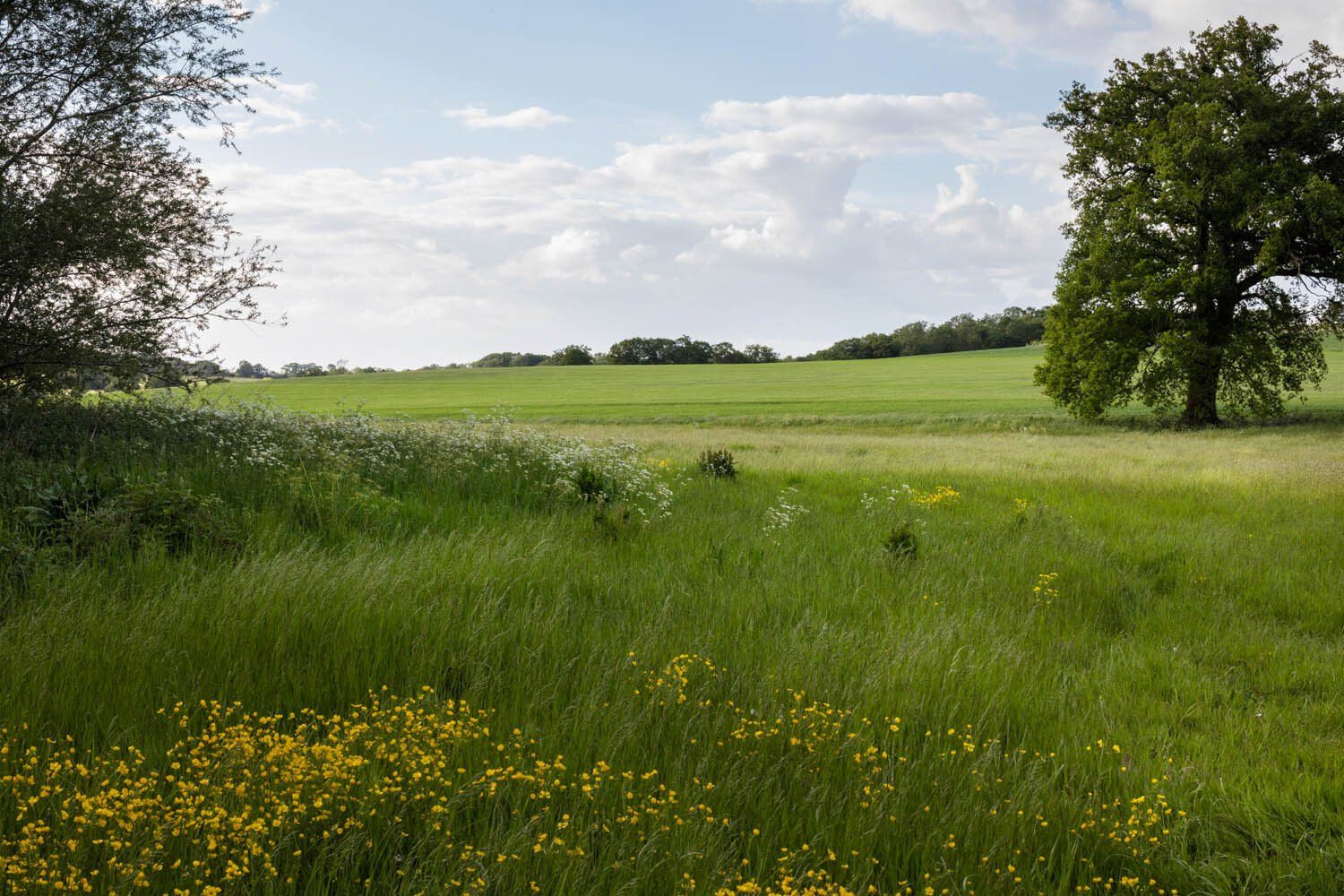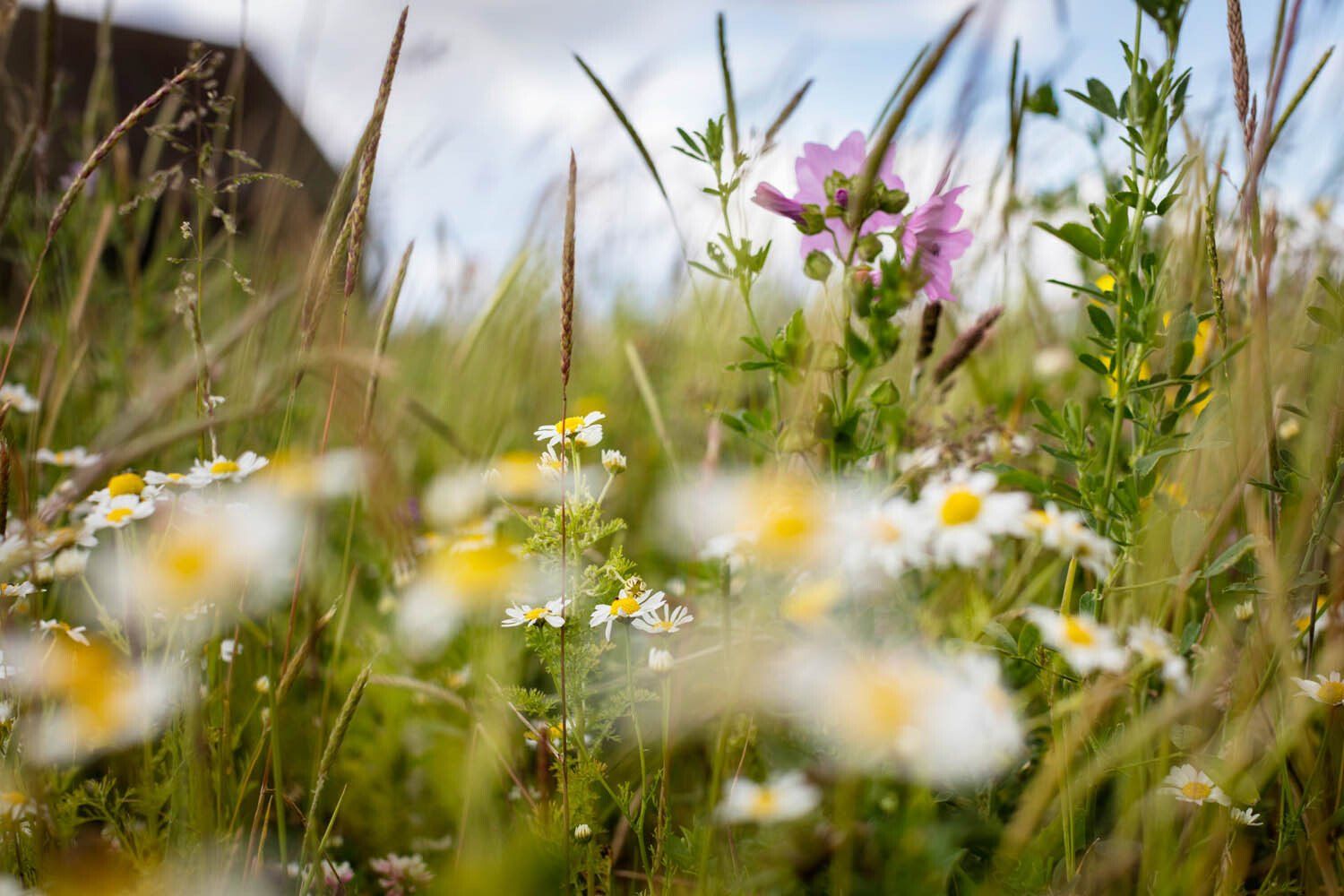If You Build it, They Will Come
Whether your garden is a modest residential back garden, a shared communal garden within a housing estate, or your access to greenery is via a simple window box, everything we do, everything we plant and water, can and does make a world of difference to wildlife.
It's important to remember that many of our native insects are very mobile and like to travel. With the right planting, your garden can act as a stopping point for many of these travellers. Our gardens can so easily become steppingstones for wildlife to move around. Each flower, each leaf, each stem, each water feature can and will be used by insects.
Nature in its resplendent glory is a complex web of interconnecting relationships and interactions, though it relies on being joined up and connected. Gardens play a central and fundamental role in achieving this. Size isn't everything. The good news is that you don't have to completely re-wild your garden to create a wildlife-friendly habitat.
Furthermore, in research conducted by the Landscape Department of Sheffield University, our gardens are the most biodiverse landscape type in the UK. Now is the time to turn your garden into a garden nature reserve. Biodiversity conservation can be integrated into our gardening.
It was once said, 'if you build it, they will come". If we provide habitat, insects will use them. As a wildlife gardener, if you provide wildlife with Bed and Breakfast, they will be happy. They need habitat and a food source. It's that simple.
A real driver of biodiversity is having a "mosaic system" of habitats. Simply put, it's an area or site comprised of multiple habitat types adjacent to one another. As gardeners, we have the power to achieve this mosaic system. As gardeners, we can make these decisions that cover our little piece of East Anglia.
So, what habitats can we achieve in our gardens? Firstly, could you create a pond. A wildlife garden isn't complete without a pond, or wetland habitat. If your "garden" is a small terrace or balcony and a pond isn't feasible, you can still create a micro "bog habitat." Simply fill up a container with soil and saturate it with water. Most passing bee species will thank you, as they prefer to rehydrate drinking from muddy water.
If your garden's scale allows, you could also think about creating a replica of the habitat wildlife take advantage of in the wild. For example, in your garden, you could make a simple log pile, and position it next to your garden pond. Remember, having a diversity of plant species is important, but having a diversity of habitat structure in your garden is equally important.
I'd like to give you a further example. As gardeners we look at bare soil as an aberration. We hate it. We must cover it with plants, or yet still, with a bark mulch. However, bare soil is a habitat type. It's a necessary habitat type used by our native solitary bee species, of which there are over 200 types. Our native solitary bees require bare soil, using it as an entry point for ground-nesting.
You could also create an area of disturbed soil to replicate an annual cornfield meadow. An area of soil, regularly disturbed, massively benefits highly floriferous, quick-growing plants. The regular cultivation and digging over mimics the trauma and ecological disturbance in which these plants thrive in the wild.
Also, think about planting a mixture of native and non-native plants. Numerous studies have shown pollinators aren't particularly bothered where they are obtaining their nectar and pollen from a native plant, or a non-native plant. They don't show any specificity to native plants.
By planting a wide range of native and non-native plants, you can increase the pollen and nectar resource in your garden by up to 3 months. The majority of UK native flowers will have finished their flowering period by late July. The non-natives can extend your pollen and nectar resource way into October, potentially early November.
If you feel the urge to pop to the garden centre to buy some new plants for your garden, there are an overwhelming variety of attractive, colorful plants that you can buy. However, did you know there is also a range of plants free of charge, providing by nectar and pollen. There are also food plants for many of our native insects. Many of these plants are also essential for maintaining healthy soil.
These free plants are called weeds. Yes, weeds! Now is the time to reassess our relationship with weeds. The definition of a weed is a plant in an undesirable place. More than ever, we need to now desire them. Some may be invasive, but our native herbivore wildlife has co-evolved with these plants over millions of years. They form the bedrock of the food chain, and without them, the complex food web in nature couldn't exist.
I had a beautiful reminder of this recently when I was weeding out some undesirable grass from my own garden. Upon removing some tough grass, I saw the unmistakable caterpillar of the Elephant Hawk-moth. It was slowly ascending the stem of our common "weed", the dandelion. The tranquil, almost timeless moment also taught me (reminded me more like!!) not to be over-tidy. Gardening, wildlife gardening, is always a perceived balance between encouraging the desirables and discouraging the undesirables.
We look at the honeybee and rejoice though we look at the slugs and snails and see them as a pest. We might want to reach for pesticides and herbicides to rebalance and "control" our surroundings.
But it's important to remember though that we are not only killing and disrupt our intended target "pest" but they also have a devastating ( and long-lasting) effect on our "desirable" insects.
See if you can you make a promise to yourself this year, this gardening year, to try and your nerve. If you see a weed, pest, or disease in your garden, try and allow nature to take its course. Given time your garden will always rebalance.
If your roses are full of aphids, wait for the predating ladybirds to naturally rebalance the situation. If you have a slug and snail problem, introduce a wildlife pond into your space that will attract frogs, which in turn will delight at chomping through your population of undesirable molluscs.
The beauty of the wildlife garden is it never stops. It's a continuous cycle, a continuous cycle of growth and decay. There is beauty in the decay; there is habitat and forage in the decay. When one thing decays into the soil, it feeds the next generation and so on. Enjoy the year ahead in the garden, take the time to notice, take the time to observe, and enjoy sharing your garden with our wildlife friends.
Daniel Lee
http://www.teasels-design.co.uk
WildEast Blog

Powered by LocaliQ
Follow Us
SIGN UP FOR NEWS & UPDATES
Newsletter Sign Up
Thank you for signing up to our newsletter.
Please try again later.
Privacy / Terms & Conditions / Sitemap




